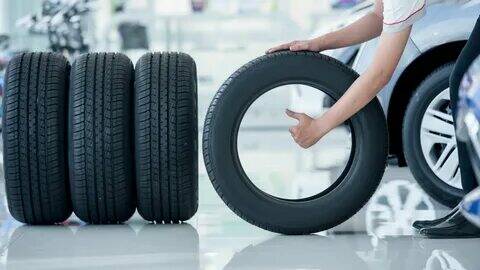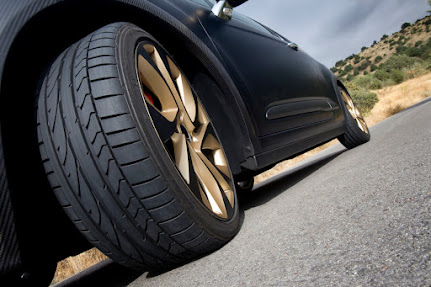The Most Commonly Asked Questions About Tyre Fitting Answered
I wish things were that simple all the time. You can't just walk into any neighbourhood dealer and pick up a pair of wheels and tyres since, regrettably, there are frequently issues with tyre sizes or brands. The engineers at your neighbourhood auto and bicycle stores are the ideal people to ask for guidance on finding the right sizes for your particular vehicle. We've compiled the following seven often-asked questions regarding installing new Tyres Wincanton:
1. Are My Old Tyres Still Needed?
While it is industry usual to discard old tyres when buying new ones, it is against the law to buy a set of wheels without removing your old car tyres. You may dispose of the old tyres yourself if you'd like, but only for a maximum of three years, keep them securely stored in a clean, dry location. Save the tyre "forever" as proof in case there are any claims relating to defective merchandise if there is no date printed on the sidewall. The most effective approach to dispose of them is to give them to the local government or to collection locations that some tyre manufacturers offer.
2. Why Aren't Any Space Savers Permitted?
Because contemporary alloy rims are significantly smaller than vintage steel rims, space savers were created. They were therefore more liable to sustain damage from potholes or curbs. For this reason, when a spare tyre was installed, automobiles were originally furnished with smaller, less-grippy spares that did not cause any problems. These space savers are no longer permitted on public highways by the authorities since alloy rims made today are stronger and no longer need this extra layer of protection.
3. What is meant by "tubeless"?
While the majority of contemporary tyres are capable of being used without inner tubes, or being tubeless, the phrase is typically applied to tyres made for motorcycles and motorbikes rather than automobiles or bicycles. Because these high-performance tyres are made from a single moulding, the likelihood of a puncture is significantly reduced.
4. Are Winter Tyres Good for the Entire Year?
Theoretically, you can drive above 100 km/h and make sure your brakes are compatible with winter tyres to use them all year round. Winter tyres come in three varieties: siped, patterned, and studded/studdable. In freezing circumstances, studded tyres provide superior traction, while pattern tyres fit into the grooves of the road. The last type of tyres are siped tyres, which have hundreds of tiny cuts all over the surface that distribute water beneath the tread and improve grip on areas covered with snow.
5. Can I Use Summer Tyres During the Winter?
Your automobile may still use summer tyres in the winter, but only if you know how to properly maintain them. Since most contemporary summer tyres aren't meant to be used in freezing or snowy weather, they need to be kept at a comfortable temperature when installed. Warm up your tyres before driving in order to prevent this, and be extremely cautious while navigating turns on wet roads as the rubber will not provide as much traction. Take them off right away if you detect any vibration or slippage problems
6-What Happens If the Pressures in My New Tyres Don't Match?
Contemporary automobiles are equipped with digital dashboard displays that show the appropriate settings for every wheel. However, if a part is replaced, these displays may occasionally reset. Make sure to check the pressures in your All Season Tyres Shrewsbury at least once every three months, since even a slight variation can lead to uneven wear on all of your tyres.
7. Is It Possible to Use Motorcycle Tyres on a Car?
As long as the motorcycle tyres won't harm the brakes, bearings or steering, you may install several types of motorcycle tyres on your car even though most manufacturers advise using original equipment components. You might need to alter these parts, depending on the size of the tyre you've chosen, but a qualified mechanic should do this before installing any new rubber.
8. Is it really necessary for me to frequently inspect my tyres?
Absolutely, in a word! For the only reason that they are so crucial to your safety as a driver, check your tyres frequently, not just sometimes. Consider this: these are the sole parts of your automobile that come into touch with the pavement. And keep in mind that the tyre contact patch is just around the size of a smartphone. ?You would be in serious trouble without proper tyres.
9. What is the proper tyre pressure for my tyres?
Regular tyre inspections or before to a long-distance drive will help you prevent any tyre pressure issues that can go undetected. Nonetheless, there is no "one size fits all" measurement for figuring out the proper tyre pressure. It may be challenging to determine the proper tyre pressure for your automobile due to the vast range of brands and models.
10. Can I have different tread patterns?
Combining several tread patterns on one axle is not a good idea. For example, an asymmetric tyre won't provide the same benefits for wet and dry handling if its counterpart isn't the same sort. To get the best results, swap out your Tyres Wincanton for ones that are identical to your current ones so that the tread patterns match precisely.



Comments
Post a Comment